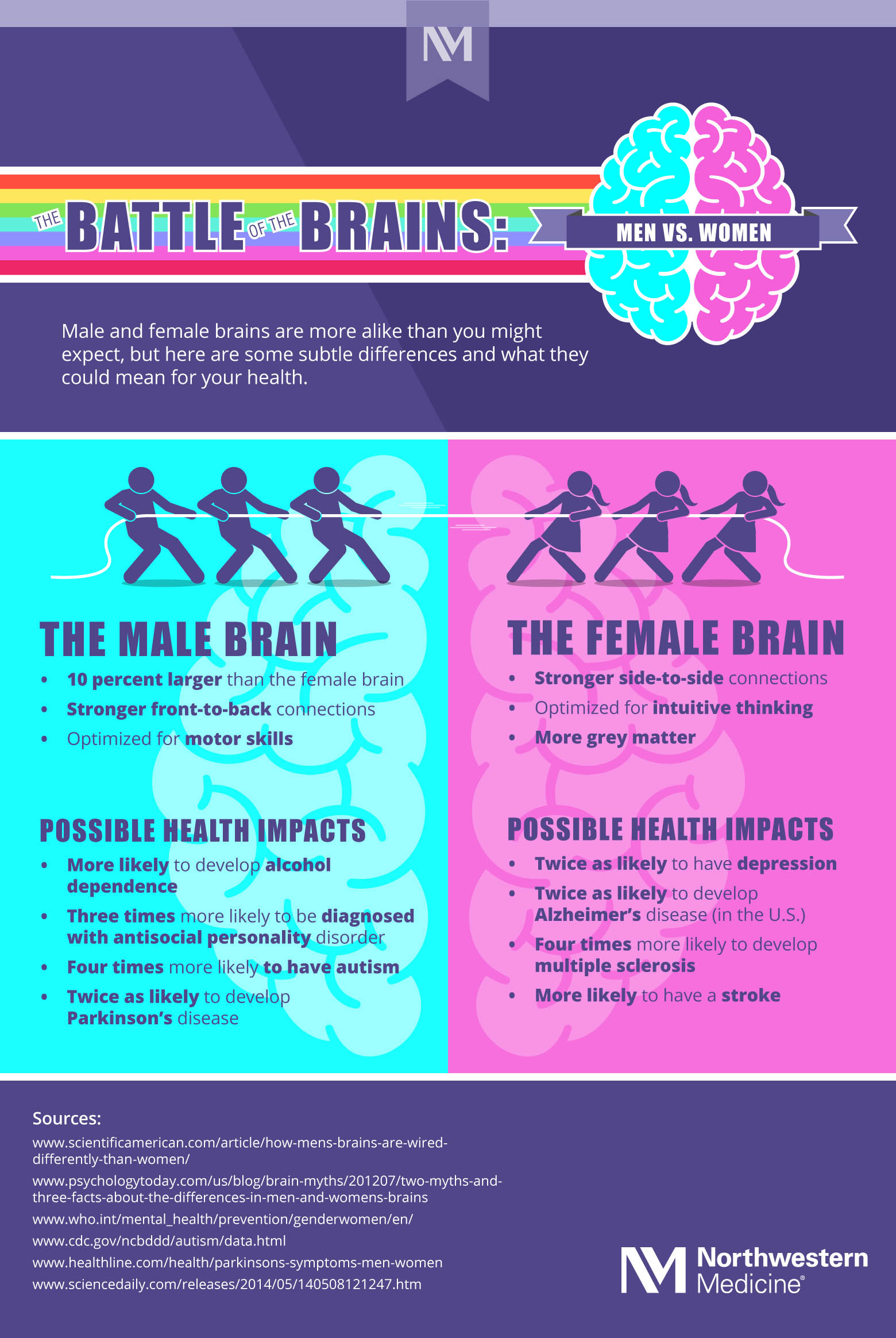Battle of the Brain: Men Vs. Women [Infographic]
When it comes to the brain, just how different are men and women? You may have heard that men’s brains are larger. It turns out, there are additional differences in grey matter and brain patterns as well. See what it all means for you and your health.
(Not) All About Size
Although the male brain is 10 percent larger than the female brain, it does not impact intelligence. Despite the size difference, men’s and women’s brains are more alike than they are different. One area in which they do differ is the inferior-parietal lobule, which tends to be larger in men. This part of the brain is linked with mathematical problems, estimating time and judging speed. Another area that was previously debated was the hippocampus, which is associated with memory, but recent studies have found no differences in the hippocampus between genders.
Grey Matter Matters
There is evidence that women have more grey matter in their brains. Grey matter contains cell bodies that help our bodies process information in the brain and is located with regions of the brain that are involved with muscle control and sensory perception. (Bad news for expecting moms: Grey matter decreases during pregnancy, which helps explain “pregnancy brain.”) That said, women have been found to use more white matter, which connects processing centers, while men use more grey matter. This could explain why men tend to excel at task-focused projects, while women are more likely to excel at language and multitasking.
Brain Chemistry
In studies examining connections within the brain, it has been found that women tend to have stronger connections side to side, which could lead to better intuitive thinking, analyzing, and drawing of conclusions. Men, on the other hand, tend to have stronger connections from front to back, which can result in heightened perception and stronger motor skills. Recent studies have also suggested that the cerebellum, historically thought only to be involved in the coordination of movement, may be slightly different between the sexes and actually have an effect on behavior and thinking as well.
In addition to brain-processing patterns, men and women have different brain chemistry. While both process the same neurochemicals, they process them differently. For example, serotonin (which is connected to happiness and depression) does not process the same in women. This could help explain why women are more susceptible to anxiety and depression.
What Does It Mean for Health Risks?
Differences in genetic make-up may lead to a higher risk of developing certain health issues. Although this is a continuing field of research, some correlations may exist between hormones, such as testosterone or estrogen, and particular health conditions. Depression, stress and anxiety, all of which are more common in women, are other factors that can lead to additional health concerns such as stroke. See what this means for your health in the infographic below. (Plus, learn other surprising facts about your brain here.)







